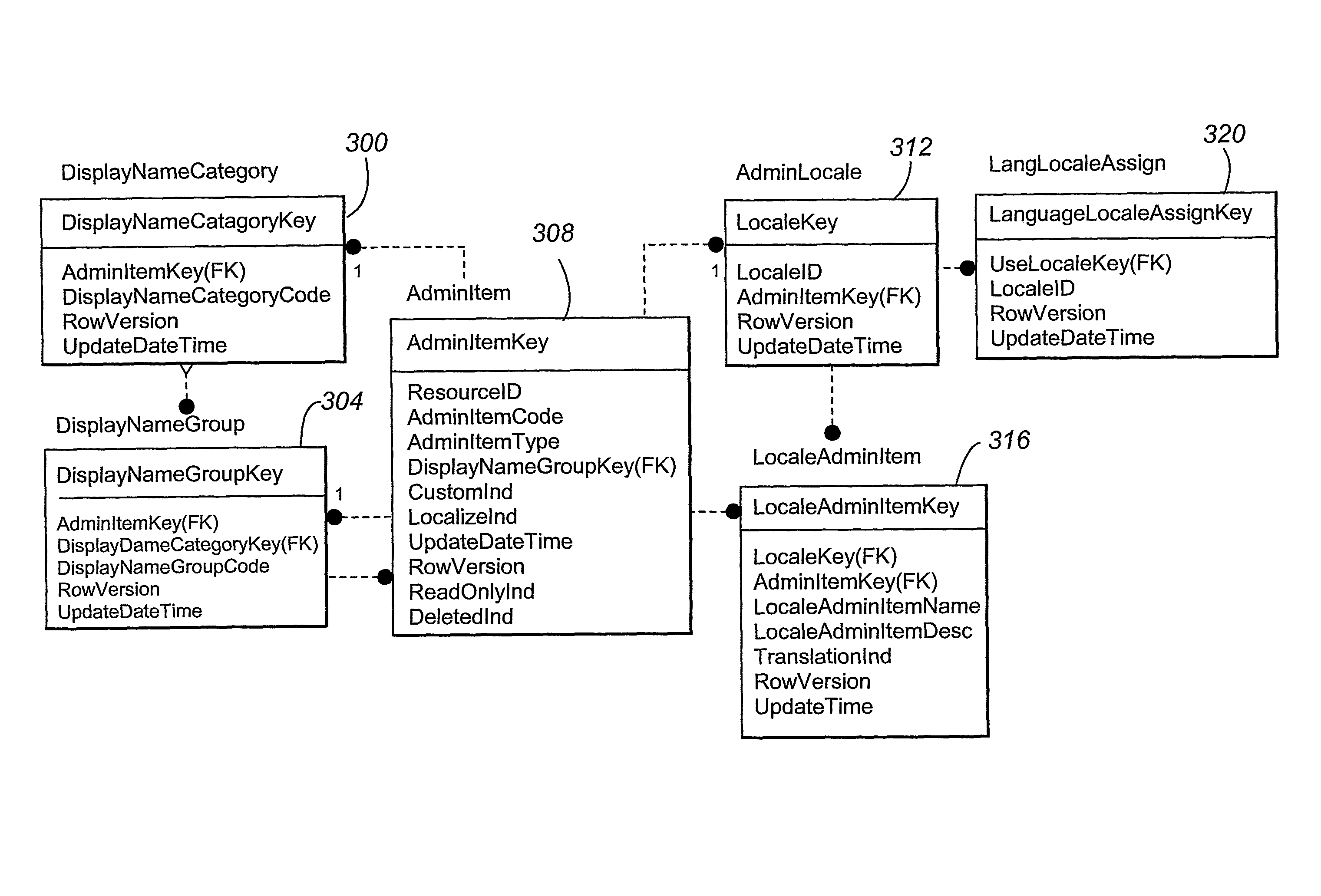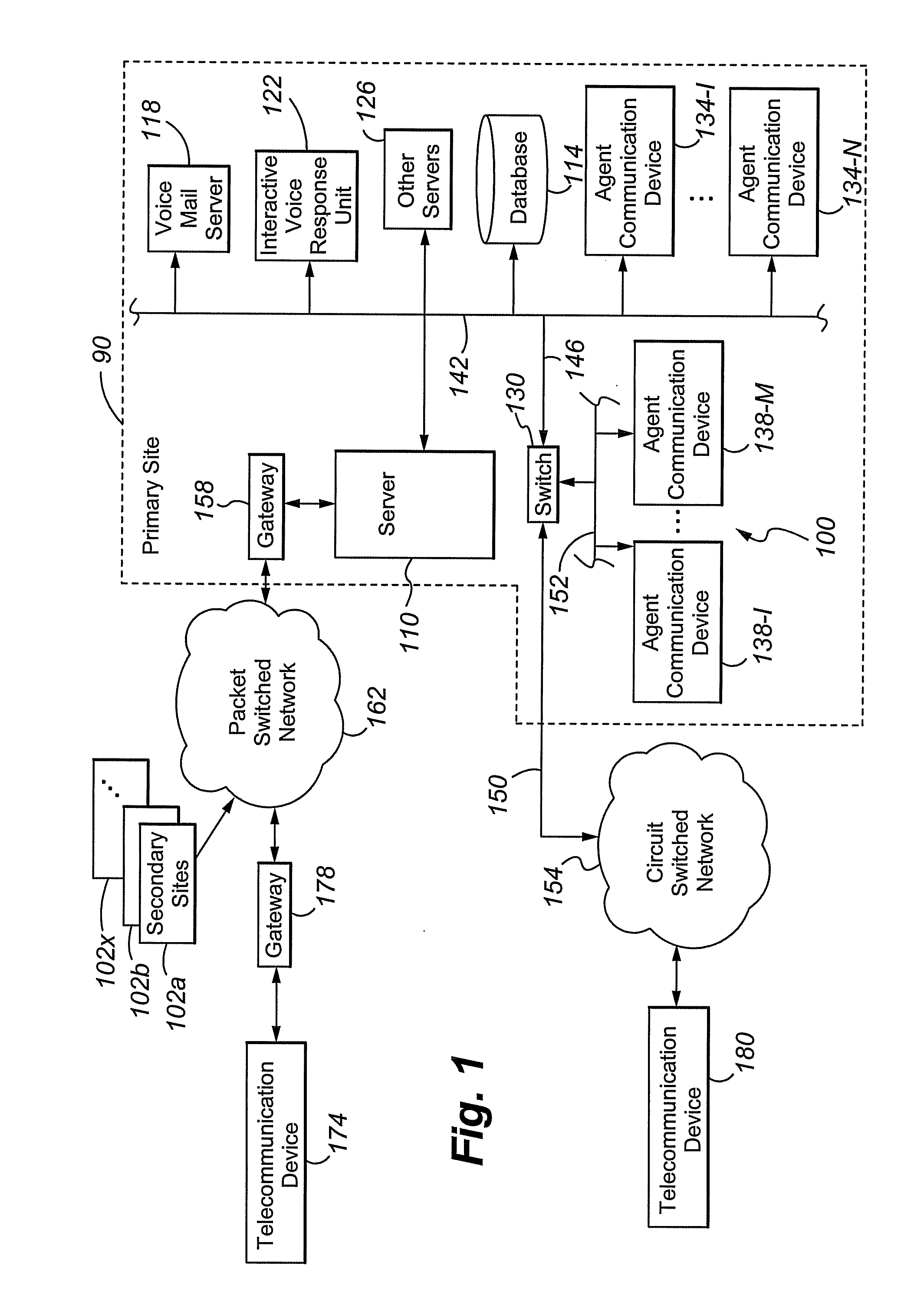Database structures and administration techniques for generalized localization of database items
a database and database technology, applied in the field of data warehouse design, can solve the problems of the vendor of contact center software products that converts selected data entities to parallel expressions, and achieves the effect of reducing the number of data warehouses and reducing the number of warehouses
- Summary
- Abstract
- Description
- Claims
- Application Information
AI Technical Summary
Benefits of technology
Problems solved by technology
Method used
Image
Examples
Embodiment Construction
The Contact Center Architecture
[0050]FIG. 1 shows an illustrative embodiment of the present invention. A primary site 90 of a global contact center 100 comprises a central server 110, a set of data stores or databases 114 containing contact or customer related information, agent information, and other contact center information that can enhance the value and efficiency of the contact center operation, and a plurality of servers, namely a voice mail server 118, an Interactive Voice Response unit or IVR 122, and other servers 126 (such as a predictive dialer), a switch 130, a plurality of working agents operating packet-switched (first) telecommunication devices 134-1 to N (such as computer work stations or personal computers), and / or circuit-switched (second) telecommunication devices 138-1 to M, all interconnected by a local area network LAN (or wide area network WAN) 142. The servers can be connected via optional communication lines 146 to the switch 130. As will be appreciated, th...
PUM
 Login to View More
Login to View More Abstract
Description
Claims
Application Information
 Login to View More
Login to View More - R&D
- Intellectual Property
- Life Sciences
- Materials
- Tech Scout
- Unparalleled Data Quality
- Higher Quality Content
- 60% Fewer Hallucinations
Browse by: Latest US Patents, China's latest patents, Technical Efficacy Thesaurus, Application Domain, Technology Topic, Popular Technical Reports.
© 2025 PatSnap. All rights reserved.Legal|Privacy policy|Modern Slavery Act Transparency Statement|Sitemap|About US| Contact US: help@patsnap.com



